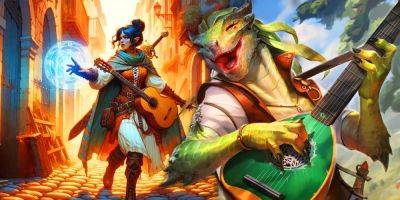2024 D&D Player’s Handbook Wizard Subclass Changes Controversy, Explained
Wizards of the Coast has released some content from the, largely regarding changes made to the classes of . While certain classes like the fighter have gotten some well-received updates, and others like the ranger have invoked wide ire for their altered ruleset, as not as much attention has been paid to the spellcasters of the game. The changes made to these classes have not been as extensive as those made to the martial characters, but they have caused some controversy in their own right.
The most substantial of these class changes pertains to the wizard and, more specifically, the wizard's subclasses. In 5th Edition, wizards had the largest list of subclass options to choose from, allowing them to specialize in different kinds of magic. The has not only cut down on the number of subclasses severely, but it has also stripped the wizard class of some of its identity.
There are 13 total subclasses for wizards in 5e. Eight of the subclasses available corresponded to the eight schools of magic: abjuration, conjuration, divination, enchantment, evocation, illusion, necromancy, and transmutation. Each of these subclasses enhanced the powers associated with their spells and made wizards better at casting magic in their given school. There were also other subclass options, like the bladesinger and scribe, that gave wizards fresh ways to fight and act in the game.
No wizard functioned the exact same as any other.
The idea of these subclasses was to let wizards become savants when it came to certain kinds of magic. No wizard functioned the exact same as any other, and the wide range of spells they could take made them one of the more varying classes in. Part of the wizard's identity centered around both their ability to specialize and the wide range of things they could specialize in.
Subclass
Description
School of Abjuration
Focuses on protective magic, creating barriers and wards to protect oneself and allies.
School of Conjuration
Specializes in summoning







